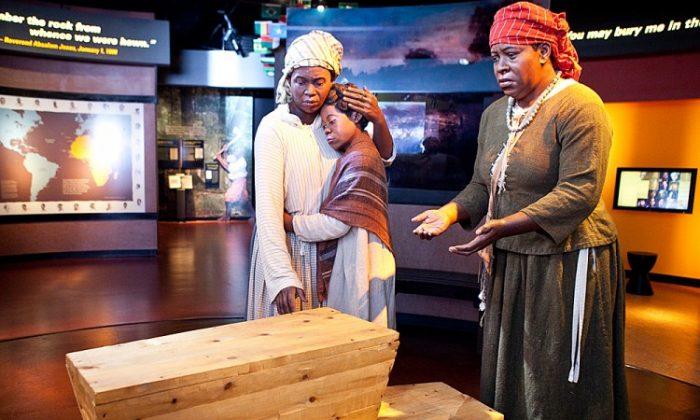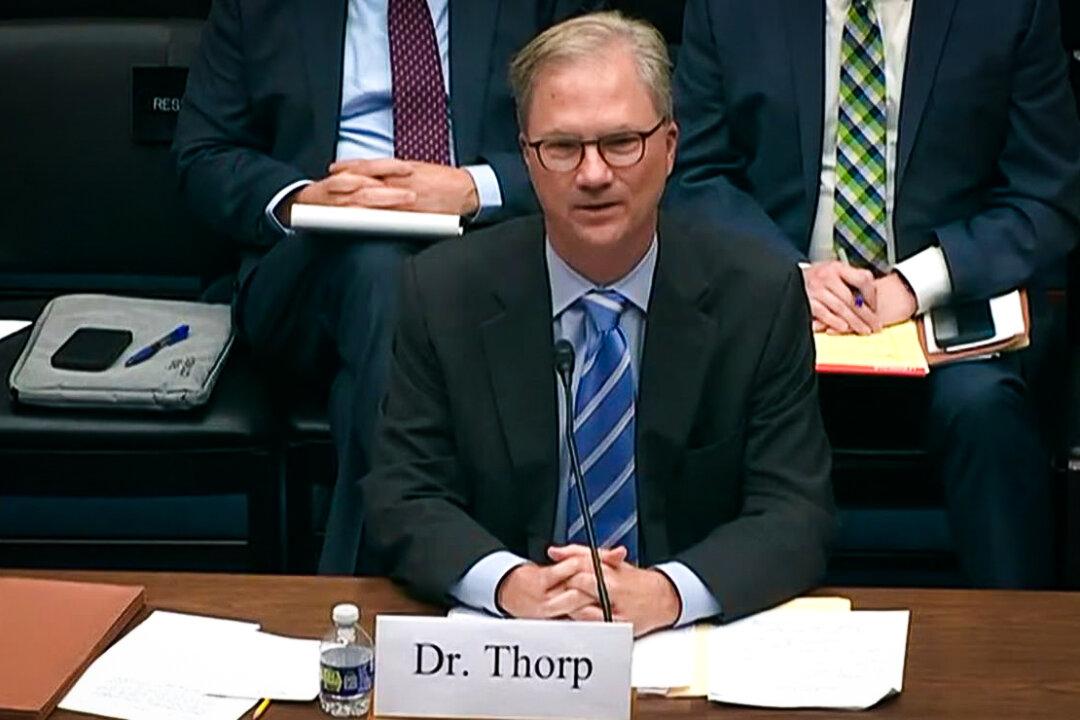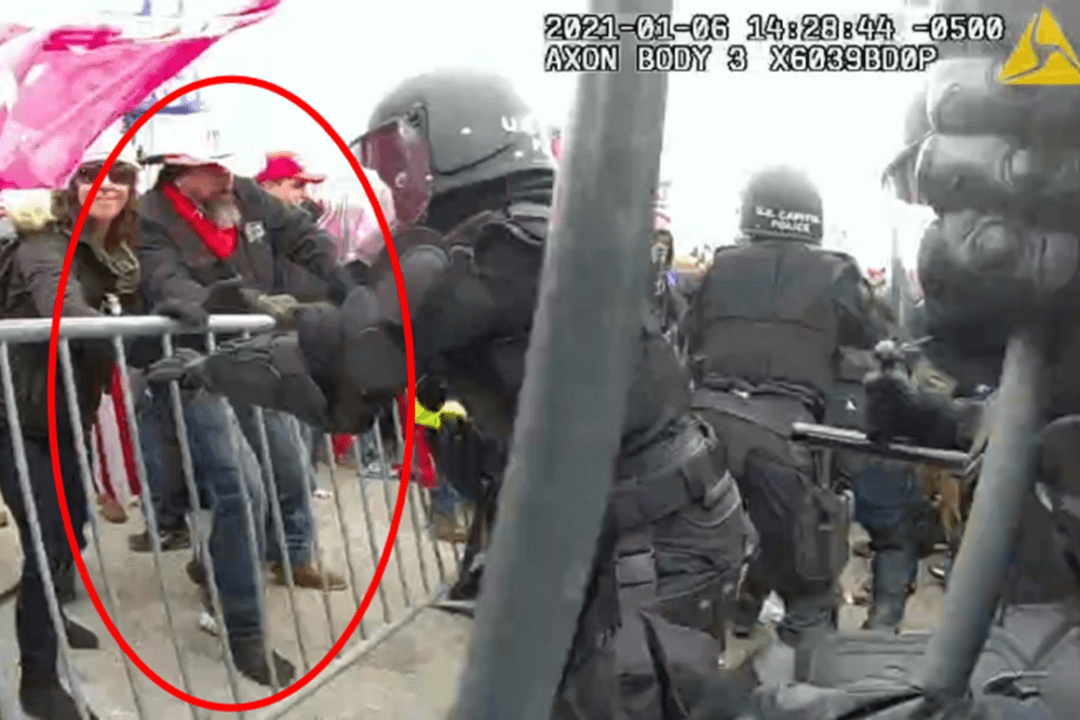NEW YORK—The African Burial Ground National Monument, a hallowed resting place for slaves for more than a century and from which 419 remains were exhumed in the early ‘90s, is set to reopen after renovations finish in October. The burial ground is on the corner of Duane and Elk Streets, just north of City Hall.
The remains were reburied at the site in 2003 after years of public contention over logistics. Small coffins commissioned from local artists and carpenters in Ghana protect the remains.
The site commemorates the estimated 15,000 to 20,000 African-Americans buried in the area—many now resting under modern skyscrapers.
A temporary memorial is currently open for three days, housing an exhibit that will be transferred to the permanent memorial when officially opens in October. The temporary memorial was designed for United Nations officials to visit while in the city for the 67th session, starting Sept. 18, said Victor Mooney, executive director for South African Arts International.
Mooney who was on site Tuesday for the exhibit opening, is helping the United Nations plan a permanent memorial to victims of slavery and the trans-Atlantic slave trade. He stressed the importance of the exhibit, reflecting on the numerous deaths suffered from enslaved Africans during trans-Atlantic travel.
“This is a big deal in African-American history,” said Tiffany Ross, a cadet at SUNY Maritime College, who attended Tuesday to show support. Ross said she had not known about the burial ground prior to the event and plans to attend. The reopening celebration will be held on Oct. 4, nine years after the remains were returned to the site. The official reopening will follow on Oct. 5.
A wreath, part of the temporary memorial, will be floated into the Atlantic Ocean from the college, in Throgs Neck, southeast of the Bronx.
The discovery of the burial ground in the early ‘90s effectively rewrote history, said Douglas Massenburg, lead park ranger. The site was later designated a national park.
“For hundreds of years people were taught that slavery only existed in the south, that enslaved people were escaping, and they were coming to the north, where they were granted their freedom,” said Massenburg. In reality, he said that if an escaped slave came to New York before 1827, the slave would either be sent back to the South or enslaved in New York.
Bodies found at the burial ground were removed and later studied at Howard University, before being returned in 2003. Information from the site and bodies continue to be studied by the New York Public Library’s Schomburg Center for Research in Black Culture.
More than 40 percent of the 419 bodies exhumed were children, mostly under age 2. Living to 2 was tough, according to the museum exhibit, but once past that age, enslaved children often lived until adulthood. Their life expectancy then was only 35 to 40 years of age. Europeans were 10 times more likely to outlive slaves, according to the exhibit.
Slavery began in New York in 1625 with trading by the Dutch West India Company, and continued for more than 150 years. Children born to enslaved women after July 4, 1799, were free after the passage of the first General Emancipation Law; children born before that date were free after the passage of the second version of the law in 1817. In 1827, slavery was abolished altogether.
Slaves buried bodies in the African Burial Ground from the 1690s to 1794, according to Massenburg. Forbidden from burying bodies inside city limits, slaves chose a “barren and wooden area on the outskirts of the city.” But in 1794, the city was expanding, and the cemetery, called the largest African cemetery in North America, with approximately 15,000 people buried there, was closed.
Park officials hope the public will join in the celebration on Oct. 4, the official reopening on Oct. 5, and youth week 2012, from Oct. 2 to Oct. 7. Find more information about the events at http://www.nps.gov/afbg/index.htm
The Epoch Times publishes in 35 countries and in 19 languages. Subscribe to our e-newsletter.
















Friends Read Free